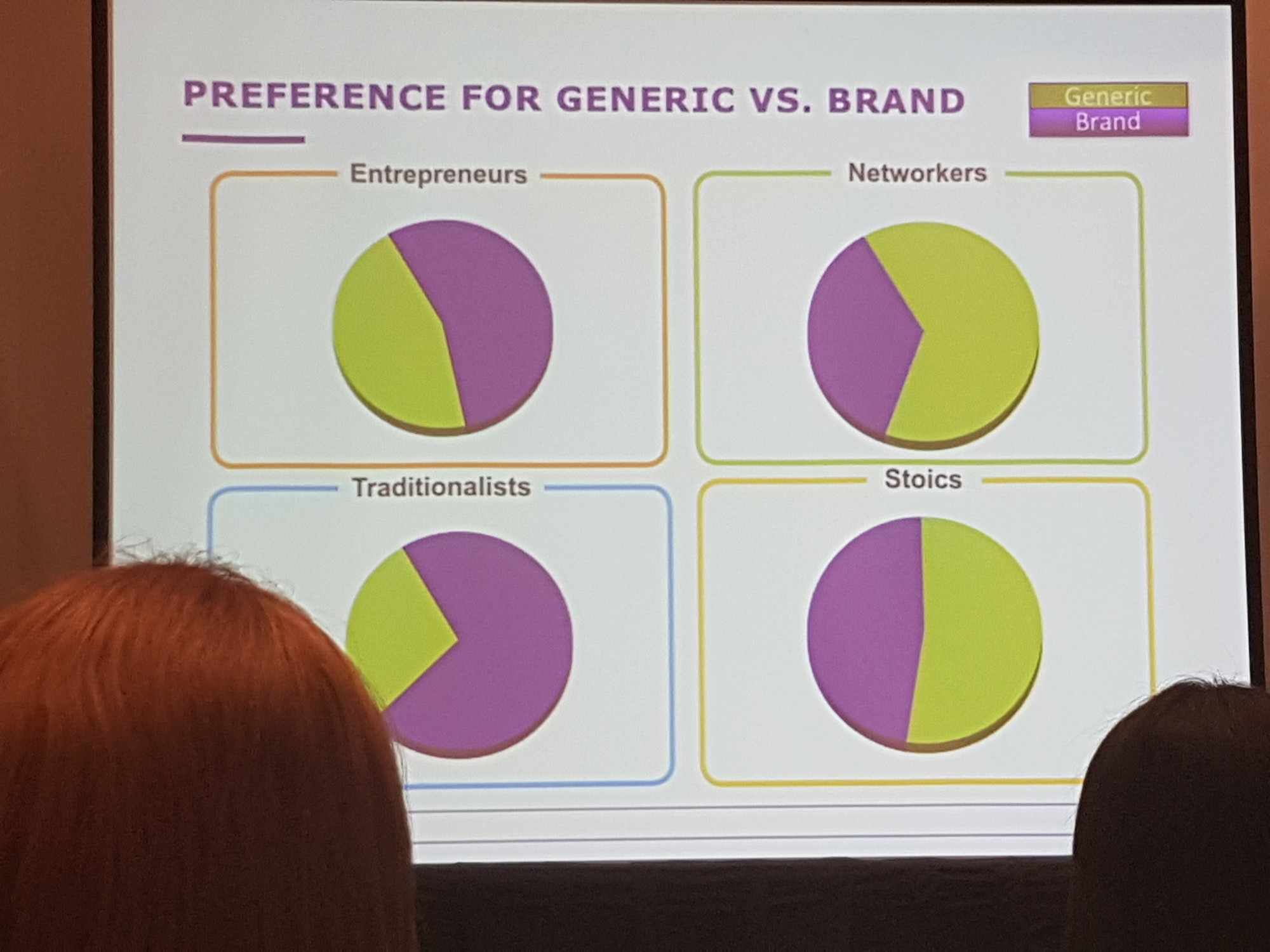I attended an Ontario Pharmaceutical Manufacturer’s Association (OPMA) meeting recently where they had a couple speakers give some very thought-provoking presentations on generational marketing. I was particularly interested in Vijay Wadhawan from Environics’ presentation, who analyzed physician attitudes and how they correlated to specific behaviors.
He started by showing a chart that had on the Y axis the level of a physician’s need for control. If a physician was closer to the bottom of the axis, they had a lesser need to be in control of every situation and were also less adaptable to change. Conversely, the higher they ranked on the axis, the more control they personally needed in their work and the more adaptable they were to change. On the X axis of the chart, they ranked physicians’ attitudes towards altruism. The further left of the axis a physician was, the more “individually” minded and focused they were. The further right on the axis a physician was, the more focused they were on the “collective good” of others.
Four Customer Target Segments
After analyzing the character traits of a large cohort of physicians, they created 4 physician target segments, basically one for each quadrant. On the upper left quadrant, they segmented out these physicians as “entrepreneurs,” as they had a tendency to need greater control, showed more adaptability, and were more individualistic. On the upper right hand quadrant, they segmented these physicians as “networkers,” as they had a tendency to need greater control, showed more adaptability but were much more focused on the collective good of their patients and society as a whole. On the lower left hand quadrant, they segmented out these physicians as “traditionalists,” as they had a tendency to need less control over their work environment, showed less adaptability to change, and were more individualistic in nature. Finally, on the bottom right hand quadrant, they segmented out these physicians as “stoics,” since they had a tendency to need less control over their work environment, showed less adaptability, but were more focused on patients and the collective good of other people.
 Characteristics of the 4 Customer Target Segments
Characteristics of the 4 Customer Target Segments
When inviting physicians to a customer advisory board meeting or working with them on a particular project in a working group or steering committee, it is helpful to consider these customer segments in order to select the appropriate people for your project. For the “entrepreneur” physicians, they resonate most with complex problems, innovative thinking, and concepts that involve risk taking. “Networkers“, on the other hand, are more focused on their patients and what can be done to enhance general health, as well as creating balance and having more options for their patients. “Traditionalists” are people who resonate with specific brands and develop hard and fast habits. They also respect the system and their working environments as well as their relationships with industry, and they aspire to be the “thought leader” in their function and to be seen as the “best” from among their peers. Finally, “stoics” are physicians who resonate most with ethical protocols and prescribing that is backed by hard data and who are most concerned about patient safety and cost of interventions to the system.
How to Collaborate with these 4 Target Segments
When deciding who to work with, for both in-person consultancy and working group meetings or via online discussion forums for output deliverables, it is best if you consider your objectives first and then select the right categories of customers. For the “entrepreneurs,” you are best to collaborate with them on projects that inspire conversations around innovative ways to change or disrupt status quo practices and to pilot innovations and new ideas in their practices. For the “networkers,” you are best to collaborate with them on projects and ideas that will benefit their patients. For the “traditionalists,” collaborations that allow them to act as the “experts” to showcase their knowledge is the most successful approach. And finally, for the “stoics,” collaborating with them on projects or ideas that support other physicians and their practices will resonate the most with them.
Modifying Pharmaceutical Approaches for the Evolving Customer
When we think of the standard pharmaceutical in-person consultancy or educational meetings (CHE), we come to realize that the majority of the participants are “traditionalists”. Unfortunately, since many of them are getting older and retiring, they now only represent 18% of the total physician universe. The values of traditionalists no longer represent mainstream physician thinking these days and the motivation to get into medicine by millennials has changed drastically. We are seeing a “feminization” of medicine and a growth of the “networker” physician rising through the ranks of millennials who have an intense need for collaboration and work-life balance, as well as doing work that has positive ramifications for the collective good. It is also important to note that with the decline of traditionalists and the increase in networkers, we also see a greater openness to embracing generic brands versus staying loyal to branded pharmaceutical products.
At Impetus Digital, we believe that the pharmaceutical industry has a real opportunity to adjust to accommodate the evolution of the healthcare providers who make the decisions that will affect patients and the healthcare system as a whole in the future. We can engage the “networkers” very effectively through online discussion forum advisory boards where they can help to shape patient support programs; clinical trial protocols; medical, marketing, and market access programs; and strategies that can impact patients and physician practices in a very impactful way. We also believe that online or virtual advisory boards can allow companies to “mix and match” their customer target segments to create “positive tensions” that can provoke, inspire, and challenge ideas and encourage new thinking.




